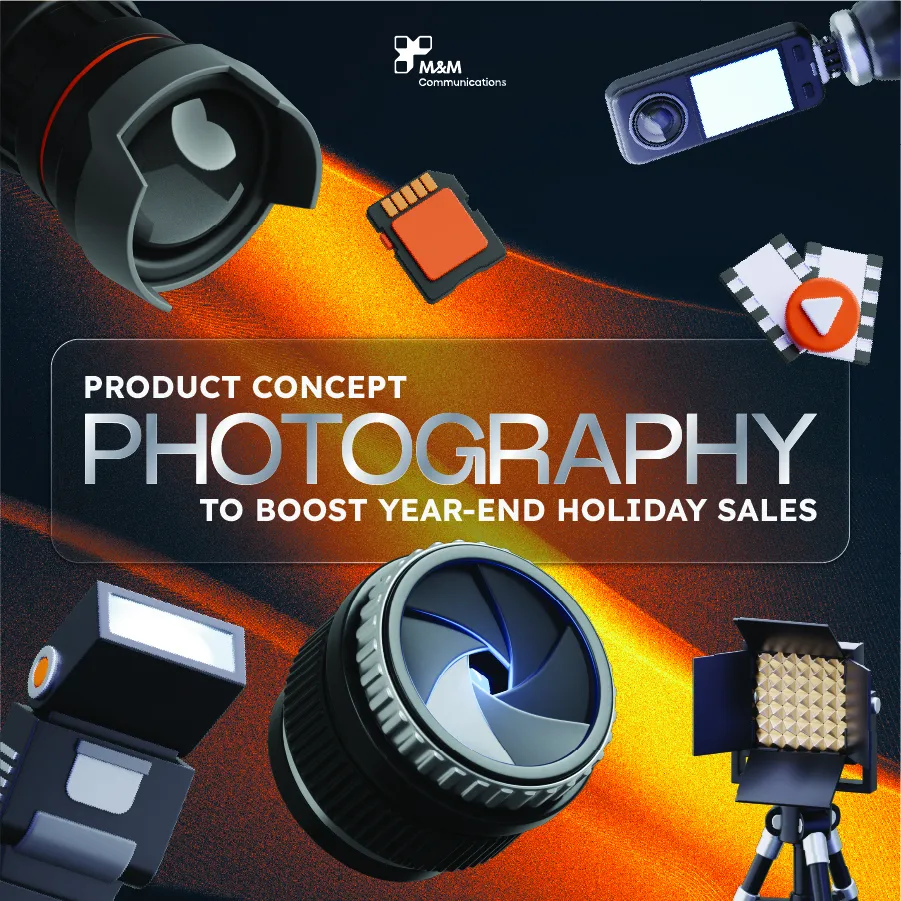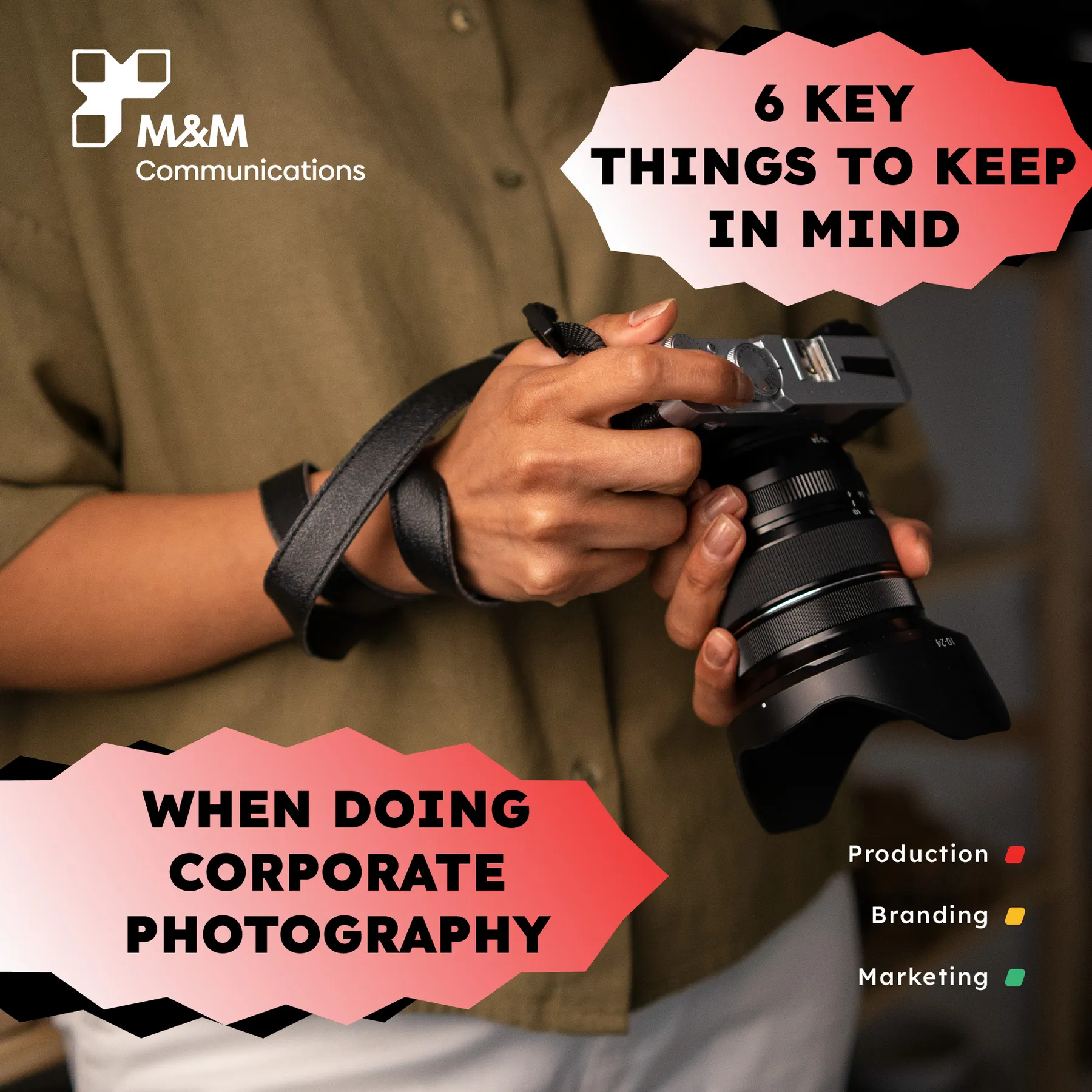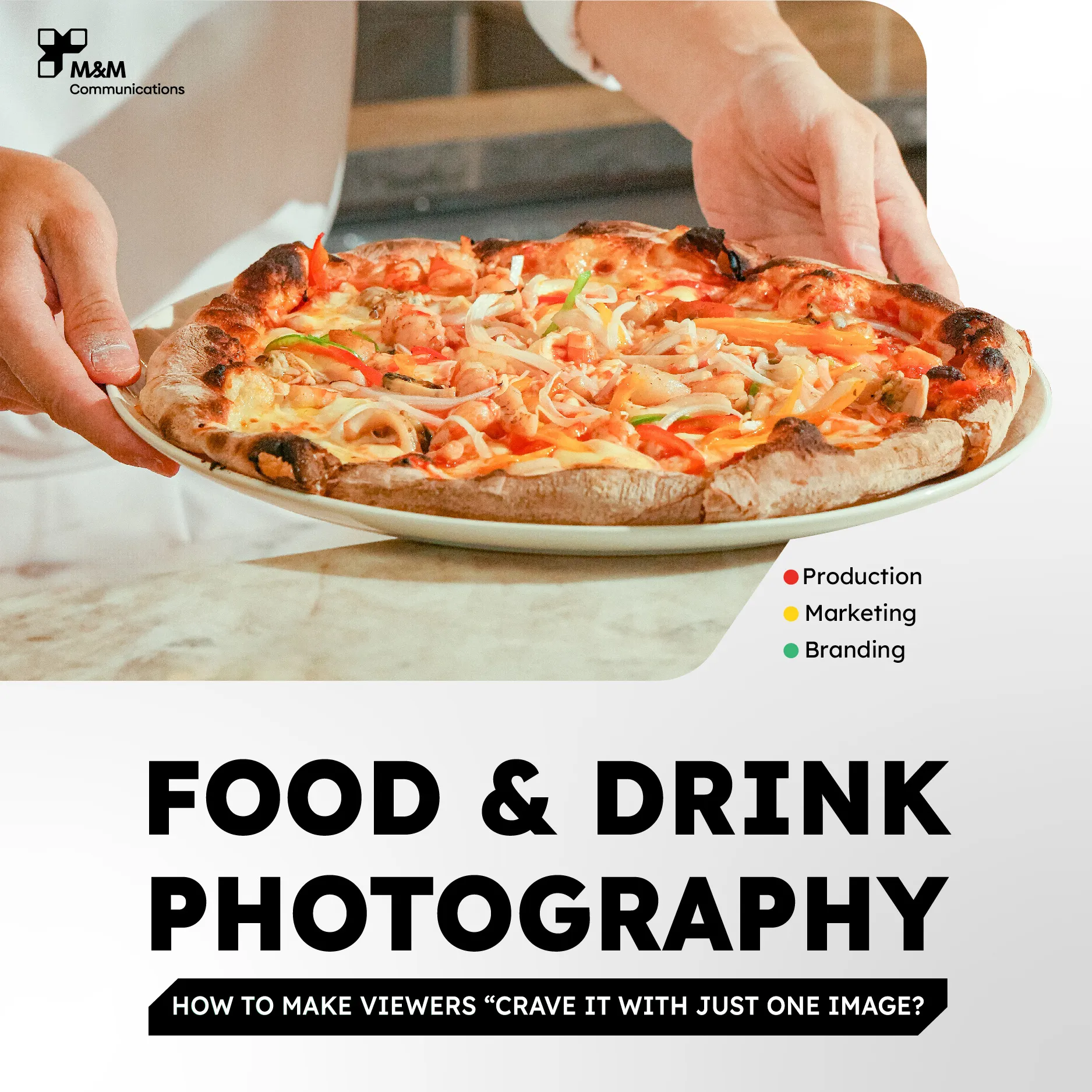
In today’s visual-driven world, people often “eat with their eyes” before they ever place an order or visit a restaurant. A beautifully shot food or drink photo not only stimulates appetite but also elevates brand image and boosts conversions. But how do you make viewers feel hungry just by looking at a photo?
Food & beverage photography is more than just documenting a dish — it’s a thoughtful combination of lighting, angles, composition, and storytelling. In this article, M&M Communications shares the key techniques to capturing mouthwatering F&B images that attract attention and convert into real results.
Lighting is everything – the golden rule of F&B photography
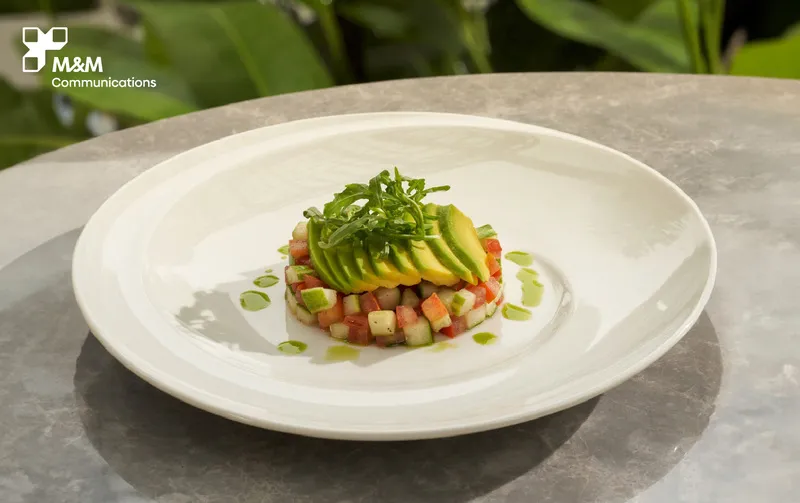
Soft natural light or controlled studio lighting is ideal for highlighting color, texture, and freshness. Avoid harsh lighting that washes out details or dim lighting that flattens the dish.
Pro tips:
Use side lighting to create natural depth and dimension.
For drinks: add backlight to highlight ice, foam, or condensation.
For hot dishes: use real or artificial steam to evoke a “freshly cooked” feel.
Food styling: it’s not just tasty, it must look tasty
A skilled food stylist makes all the difference. A carefully loosened pile of noodles or strategically placed toppings can make the dish look more natural and delicious.
Styling tips:
Use the freshest ingredients for maximum visual appeal.
Select props with neutral or complementary tones to keep focus on the food.
For beverages: garnish with lemon slices, mint, or textured ice to enhance the “refreshing” vibe.
Choose the right camera angle for the dish
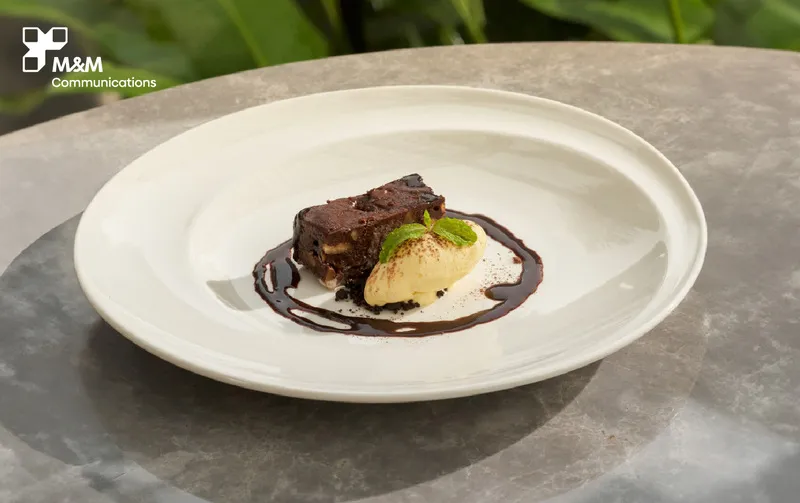
Not all dishes look best from the same perspective. The right angle enhances the food’s visual appeal and structure.
45-degree angle: versatile and dimensional, great for mains like burgers, pasta, or steaks.
Top-down (flatlay): perfect for salads, pizzas, or multi-dish table spreads.
Close-up: zoom in on “crave-worthy” details like melted cheese, charred edges, or glossy toppings.
>>> “Unbeatable” Angles In Food Photography – 45-Degree, Top-Down Or Close-Up?
Edit with brand tone in mind
Post-production (retouching) ensures clean, sharp, consistent visuals. But over-editing can make food look artificial or off-brand.
Suggestions:
Maintain accurate, realistic colors of the dish.
For youthful, energetic brands: go with bright, airy tones.
For premium brands: favor soft shadows, contrast, and refined lighting.
Tell a story with props and composition
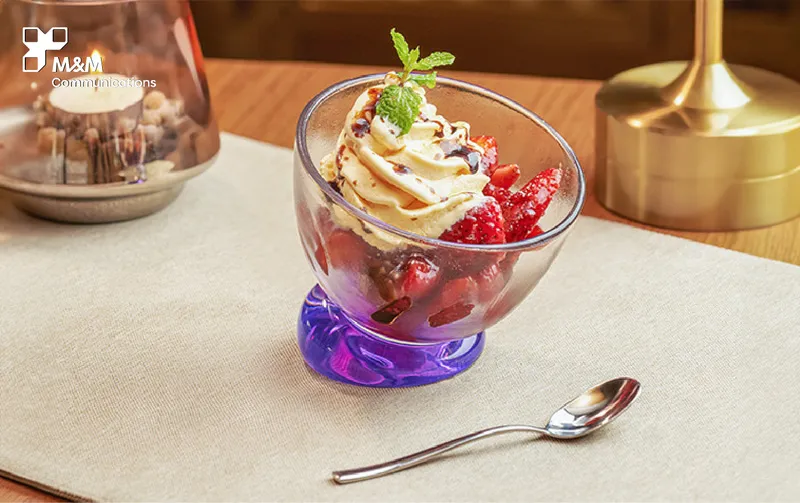
A food photo isn’t just about the dish — it can capture a moment, a setting, or a feeling.
Composition can hint at a cozy family dinner, romantic date night, peaceful breakfast, or lively celebration.
Well-chosen props — a hand reaching in, a napkin, a glass of wine, or floral decor — bring life and connection to the shot.
CONCLUSION:
Creating “craveable” food and drink photography requires more than technical skills; it demands emotion, storytelling, and a keen eye. A mouthwatering image can stop the scroll, inspire an order, or become the reason someone visits your location.
At M&M Communications, we offer professional food and beverage photography services, encompassing lighting setup, food styling, shooting, and retouching. Every shoot is a chance to tell a delicious story that makes your brand stand out across menus, social media, and advertising campaigns.
Contact M&M Communications to create irresistible food and beverage visuals, the kind that make people say, “I need to try that!”
>>> Top 8 Impressive F&B Product Photography Concepts For Businesses


